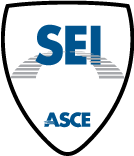
After a firm formally signs onto the commitment, they will need to create an Embodied Carbon Action Plan (ECAP). The firm's ECAP will center around four main topics: an embodied carbon education plan, a reporting plan, reduction strategies, and advocacy. Firms will then implement their ECAP with the support of educational resources and tools accessible through SE 2050.
Firms will input projects' embodied carbon measurements into the SEI 2050 database. After adequate embodied carbon data has been collected for different regions and building types, embodied carbon benchmarks and reduction targets will be developed.
On December 16, 2019 the SEI Board of Governors (BOG) unanimously voted to support the development of the SE 2050 Commitment Program:
We, the Structural Engineering Institute (SEI) of the American Society of Civil Engineers (ASCE), support the vision and ambition of the SE 2050 Challenge. We, as a leading structural engineering organization in the United States, recognize the need for coordinated action across our profession to achieve the globally stated goal of net zero carbon by 2050."


